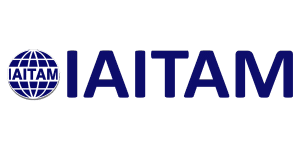How to Make IT Asset Management a Strategic Advantage, Not Just an Operational Necessity

For many organizations, IT Asset Management is treated as a required chore/checklist item, something that must be done to keep track of hardware, software, and compliance obligations. It’s often seen as a cost center, a back-office process that ensures audits go smoothly and technology purchases stay within budget. IT asset management can be so much more than that. When done right, it becomes a strategic advantage, driving efficiency, cost savings, risk reduction, and even innovation. There is sometimes a perplexing disconnect between investment in ITAM (within an organization), and executive desire for complete IT transparency.
So how do you move IT asset management from a routine operational task to a function that creates real business value? It starts with a mindset shift: ITAM is not just about tracking assets, but about enabling smarter decision-making across the entire organization. How in the world is an IT Executive Visionary going to actualize their proposed architecture/reality, without having a true picture of reality today? If someone wants to transform the estate, hopefully they understand they need to be able to actually see it!
Many companies fall into the trap of thinking about IT assets only in terms of ownership and compliance. While those are critical, IT asset management is also a goldmine of data that can inform broader business strategies. Organizations that treat ITAM as a business enabler can optimize purchasing decisions by identifying underutilized or redundant technology. They can improve budgeting and forecasting by providing accurate lifecycle insights, enhance security by identifying outdated or unsupported software that could pose risks, and support sustainability goals by managing end-of-life disposal responsibly. By treating IT asset management as a function that delivers value—not just an administrative necessity, it can play a key role in improving efficiency and reducing waste.
To elevate IT asset management into a strategic function, it must be aligned with overall business objectives. This means working closely with finance, procurement, security, and IT operations teams to ensure IT asset decisions support broader company goals. IT asset managers have insight into where technological investments are being made and how they’re being used. By leveraging this data, organizations can avoid overspending on unnecessary licenses, identify cost-saving opportunities, and ensure IT purchases align with business priorities. ITAM also plays a critical role in risk management, as poor asset tracking can lead to compliance violations, security risks, and unplanned downtime. A well-managed ITAM strategy can proactively reduce these risks by ensuring software is properly licensed, security patches are up to date, and end-of-life assets are handled effectively.
Beyond cost control and risk reduction, IT asset management can also support digital transformation initiatives. Businesses may invest in new technologies without fully understanding how they fit into the existing IT environment. IT asset managers can provide valuable insights into how current systems are being utilized, helping leaders make informed decisions about future investments. Without this perspective, companies may find themselves spending money on new solutions while underutilizing existing ones, leading to inefficiencies and unnecessary complexity.
One of the biggest barriers to making ITAM a strategic function is that many organizations operate reactively. They track assets because they have to, but they aren’t using ITAM data to anticipate needs or drive efficiency. A proactive approach requires regularly analyzing asset utilization to identify opportunities for optimization, collaborating with procurement teams to ensure new purchases align with actual needs, working with security teams to track vulnerabilities in software and hardware, and engaging with leadership to provide reports that highlight ITAM’s impact on cost savings and risk reduction. Let’s not forget the importance of highlighting the critical role ITAM plays in these initiatives.
Of course, ITAM should partner with other groups, be creative, and find ways we can deliver value. Much like eating our vegetables, this concept can go in one ear and out the other. What is going to matter is taking action. If I were to read the article thus far, I would probably be thinking that it all “checks out” or “makes sense to me.” Let’s not fall into that trap! There truly is the potential for serendipity around the corner, if we choose to walk towards it. So, what should someone do? Intentionally take steps to build relationships with other groups that you anticipate could benefit from you, or your team’s, ITAM experience and data. Write out five individuals from these groups to have coffee or lunch with. Get to know not just them, or their role, or their business, but all of it! Have frank conversations. Maybe our peers have blind spots, and we can be the ones to empower them to improve beyond them. If we don’t help others have the vision of what ITAM can really do, who will? Be willing to take some risk. Jump in to support a data center migration with ITAM reporting, and it just may lay the foundation for long-term credibility.
When IT asset management is fully integrated into business strategy, it can do more than just reduce costs, it can enable growth. Organizations that optimize their IT assets can reinvest savings into innovation, improve employee productivity with the right technology, and reduce the risks that slow down progress. In the end, ITAM is more than a checklist item. It’s a crucial function that, when given the right focus, can drive smarter business decisions, strengthen security, and create long-term value. The challenge is shifting the perception of IT asset management from a back-office necessity to a front-line business enabler. And that starts with making ITAM a core part of strategic conversations, not just an afterthought.
